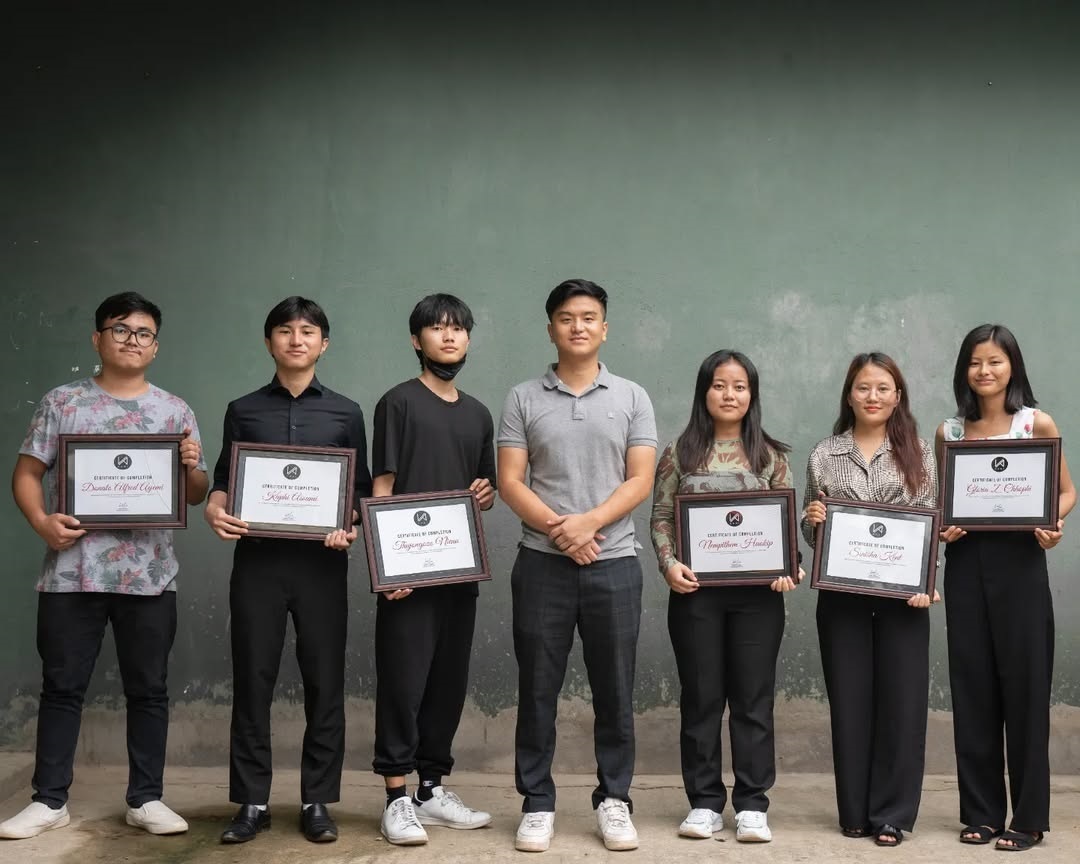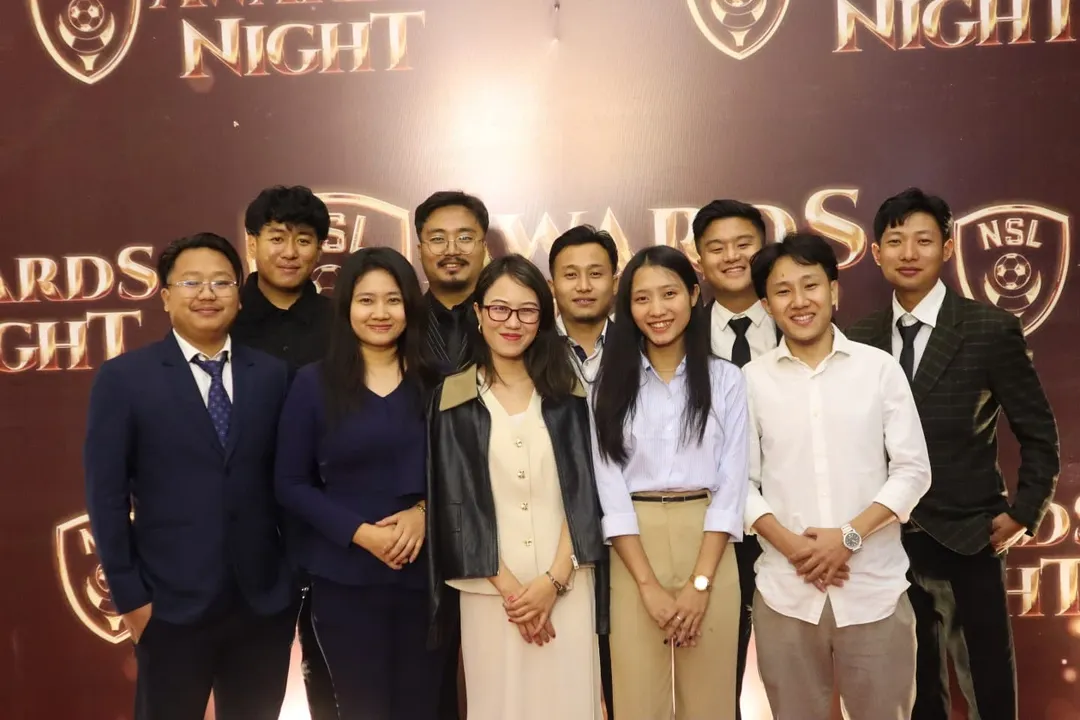
- Kakivi Chishi.
- DIMAPUR — Drawn to
storytelling and content creation from a young age, Kakivi Chishi often found
joy in experimenting with video editing tools and helping friends visualise
their ideas. However, it was during the pandemic—a period of pause and
reflection—that a turning point came.
- Noticing a
lack of established marketing agencies in Nagaland, he identified a need for
creative and branding services in the region. This led to the founding of KAKI
Marketing in February 2021 with a clear mission: to empower local brands,
support entrepreneurs, and take brand Nagaland to the world.
- Having done
his high schooling at Woodstock School in Mussoorie before graduating from
Delhi University, Chishi, the managing director of the agency, has since guided
KAKI into a full-service creative agency and official media and marketing
partner for major events including the Nagaland Super League, Hornbill
Festival, and North East Games.
- The agency
has also launched two verticals—KAKI Studios, a production arm, and AHIBI.in, a
homegrown online ticketing platform supporting event organisers across the
Northeast.
- Over the
years, Chishi has worked with a wide range of professionals—from high school
dropouts to trained specialists—and has employed over 40 individuals united by
a shared belief in the creative potential of Nagaland.
Also read: From Passion to Profession: Social Work in the New Era of Career Consciousness
- In this
interview with Eastern Mirror, Chishi breaks down the core of KAKI
Marketing’s mission, offers practical advice for students interested in digital
marketing, and highlights the importance of future-facing skills in shaping a
creative economy in Nagaland.
- Please
provide an outline of KAKI Marketing’s mission in Nagaland.
- KAKI
Marketing’s mission is to drive business growth in Nagaland through data-driven
digital marketing strategies, focusing on increasing online visibility,
customer engagement, and revenue for local enterprises. We aim to deliver
measurable results using tools like SEO, social media, and analytics,
positioning Nagaland businesses for success in the digital economy.
- How
would you explain digital marketing to a school or college goer?
- Digital
marketing is promoting products or services online using platforms like
Instagram, Google, or email. It’s about creating ads or content that get clicks
and sales, using data to track what works, like running a Facebook ad for a
local shop and seeing how many people buy.
- Which
areas of digital marketing should beginners explore first, and why?
- Beginners should
start with social media marketing, content marketing, and search engine
optimisation (SEO). These are low-cost to learn, widely used (e.g., 59% of
businesses use social media ads per Statista), and build skills like creating
posts, writing blogs, or optimising websites for Google, which are in demand.
- Are
there specific certificates or short courses you recommend for newcomers?
- I recommend
IIM SKILLS for its placement support and comprehensive curriculum, Digital
Vidya for industry-recognised training, and free courses like Google Digital
Garage (covers SEO and analytics) and HubSpot Academy (inbound marketing).
These provide practical skills and certifications valued by employers, with
Google reporting 80% of its learners gaining career benefits.
- How can
students in Nagaland gain practical experience while still at school or
college?
- Students
can freelance on platforms like Upwork (10,000+ digital marketing gigs
globally), intern with local agencies like KAKI Marketing, which offers
hands-on projects, or start personal blogs to practice SEO and content
creation. Joining online marketing communities or taking courses with live
projects also build real-world skills.

- With interns. Over the past
four years, over 40 students have interned with KAKI Marketing.
- Which
technical and soft skills are essential in this field?
- Technical
skills: SEO (drives 53% of website traffic per BrightEdge), social media
marketing, data analytics (e.g., Google Analytics), and content tools like
Canva. Soft skills: communication, problem-solving, adaptability, and time
management. These ensure you can analyse data, create campaigns, and thrive in
dynamic roles.
- How does
the marketing scene in Nagaland differ from that of larger Indian cities?
- Nagaland’s
marketing scene is smaller, with fewer agencies and a focus on local
businesses, compared to cities like Mumbai, where digital ad spend is 15% of
India’s $9 billion market (eMarketer). Nagaland emphasises cost-effective
strategies like social media, while urban markets use advanced tools and
compete across diverse industries.
- Which
local sectors most need marketing support, and why?
- Tourism,
handicrafts, and agriculture need marketing to boost revenue but lack online
reach; handicrafts face low e-commerce adoption; and agriculture needs digital
marketplaces. Effective campaigns can increase sales and market access for
these sectors.
- How
important are local languages and culture when crafting campaigns?
- Local
languages are critical for targeting Nagaland’s diverse audiences, as 70% of
Indian internet users prefer regional content (Google). Campaigns in languages
can improve engagement and click-through rates, ensuring ads resonate and drive
conversions.
- How do
you measure whether a campaign has worked?
- Campaign
success is measured by key performance indicators (KPIs) like website traffic
(e.g., 10,000 monthly visitors), conversion rates (e.g., 5% of visitors
buying), and ROI (e.g., $2 earned per $1 spent), tracked via Google Analytics.
High engagement (likes, shares) and lead generation also signal effectiveness.
- What
tools or software do you rely on each day?
- I use
Google Analytics for performance tracking, Google Ads and Meta Ads Manager for
campaigns, HubSpot for lead nurturing, Mailchimp for email marketing, Hootsuite
for social media scheduling, Ahrefs for SEO insights, and Canva for visuals.
Asana and Slack keep projects and teams aligned.
- How is
artificial intelligence changing marketing?
- AI
transforms marketing with personalisation (e.g., 80% of consumers prefer
tailored ads per Epsilon), chatbots handling 70% of customer queries (Gartner),
and predictive analytics improving ad targeting by 20% (McKinsey). It automates
tasks and optimises budgets, making campaigns smarter and faster.
- Which
emerging trends should students watch over the next five years?
- By 2030,
watch AI-driven personalisation (projected $3 trillion market impact,
McKinsey), voice search optimisation, AR/VR ads (10% CAGR, Statista),
short-form video (e.g., TikTok’s 1 billion users), and data privacy
regulations. These will define high-demand marketing roles.
- Looking
back, what guidance would you give your younger self at school?
- I’d tell my
younger self to learn SEO and analytics early, experiment with free tools like
Google Ads, and freelance for local businesses to build a portfolio. Starting
small projects and staying updated on trends would’ve given me a head start.
- What
three steps should a student take today to begin a marketing career?
- Learn basics: Take free courses
like Google Digital Garage or HubSpot to master SEO and social media.
- Create a portfolio: Build a
blog or run a small ad campaign to showcase your skills.
- Get experience: Freelance,
intern at agencies like KAKI Marketing, or volunteer for local businesses
to apply your knowledge.

- With team members at the NSL
Awards Night.
- RAPID
INSIGHTS
- Most-used
app on your phone?
- Instagram,
for monitoring trends and campaign performance.
- Dream
client you would love to work with?
- A Nagaland
tourism startup to boost online bookings.
- If
marketing had a mascot, what would yours be?
- A rocket,
symbolising fast, data-driven growth.


